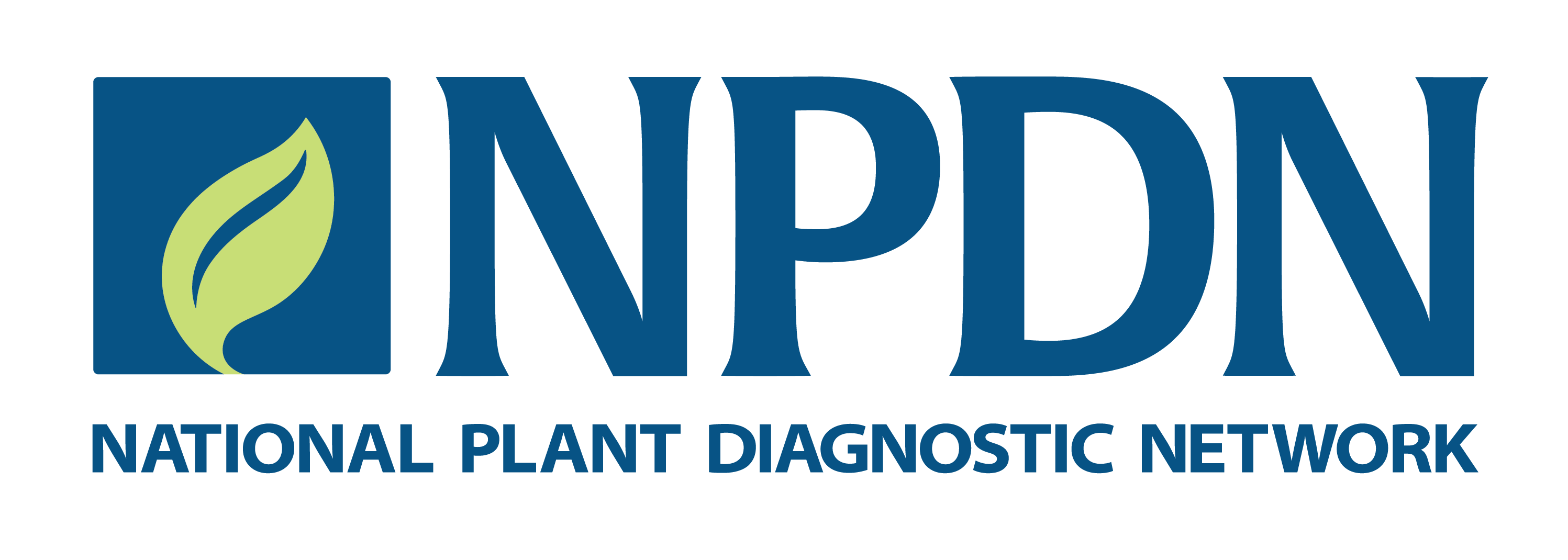Samantha Fieweger, Wisconsin Department of Agriculture, Trade and Consumer Protection, and Laura Miles, Michigan State University
In plant diagnostic laboratories that routinely run molecular tests, the efficient disruption and homogenization of plant tissues is a critical step for reliable and reproducible detection of plant pathogens. The tissue homogenization technique is coupled to a nucleic acid extraction protocol, and together they will determine both the quantity and quality of the DNA or RNA used in downstream applications.
Choosing the correct tissue homogenization technique not only depends on the type of plant material, but also on the available budget and equipment. There are many different homogenization techniques, and a few that we use in our labs are discussed below.
Prior to using any of the described techniques, hard plant tissue can also be ground in liquid nitrogen or freeze-dried (although a lyophilizer is an expensive piece of equipment) to obtain a fine powder. These pretreatments are effective alternatives to ensure good tissue maceration.
Drill press attachments make quick work of all tissue types. Samples are ground in bags containing lysis buffer and transferred to microcentrifuge tubes for nucleic acid extraction. This technique yields finely macerated tissue quickly and inexpensively. Drawbacks to this technique include variation of tissue maceration between users and bag breakage. The use of a rubber mallet to break up bulky tissue samples prior to maceration facilitates the process.
Bioreba also offers semiautomated homogenizers (known as Homex) to speed up sample processing. They also offer extraction bags of different sizes, which can come in handy when processing samples in larger volumes.
Bead beating yields very finely macerated tissue quickly from a set program. This technique is very well suited for high throughput testing and, depending on the machine, it can accommodate tubes of different sizes (2 ml to 50 ml). Drawbacks to this technique include instruments that can be expensive to purchase, costly tubes and beads, and the noise of the instrument when running.
In plant diagnostic laboratories that routinely run molecular tests, the efficient disruption and homogenization of plant tissues is a critical step for reliable and reproducible detection of plant pathogens. The tissue homogenization technique is coupled to a nucleic acid extraction protocol, and together they will determine both the quantity and quality of the DNA or RNA used in downstream applications.
Choosing the correct tissue homogenization technique not only depends on the type of plant material, but also on the available budget and equipment. There are many different homogenization techniques, and a few that we use in our labs are discussed below.
Prior to using any of the described techniques, hard plant tissue can also be ground in liquid nitrogen or freeze-dried (although a lyophilizer is an expensive piece of equipment) to obtain a fine powder. These pretreatments are effective alternatives to ensure good tissue maceration.
Micropestle and microcentrifuge tube
This inexpensive technique allows for small volumes of plant, insect, fungi, or bacteria to be ground directly in a lysis buffer and microcentrifuge tube. This technique is best used when you have only a small amount of tissue to use and want to control the maceration. Drawbacks to this technique include variation between users, the time needed to individually macerate each sample, and coarsely ground material.Freeze/Thaw
This technique works best on bacterial colonies and fungal hyphae that have been pulled cleanly from samples or from culture plates. The material is placed directly into a microcentrifuge tube containing nuclease free water and then frozen, thawed, and vortexed multiple times to continue breaking apart the material. This technique is inexpensive and easy to perform, and it can be done while performing other lab tasks. Drawbacks include not knowing exactly how much break down of tissue has occurred and the length of time it takes to cycle multiple times.Heating
This technique is best used for lysing bacteria. Bacterial colonies (2–3) are transferred into a microcentrifuge tube containing molecular-grade water or a buffer (e.g., Qiagen elution buffer) and heated in a heating block or water bath for a specified time (e.g., 95°C for 5 minutes). A shaker heating block or vortexing at timed intervals can aid in additional cell break down. This technique is inexpensive and easy to perform, and it can be done while performing other laboratory tasks. The supernatant can be directly used for PCR. Drawbacks include length of time and unknown tissue break down.Manual and semiautomated tissue homogenizers
The private companies Agdia and Bioreba each offer manual tissue homogenizers that are suitable for a small number of samples. These hand-held devices can be attached to a drill press to avoid manual work.Drill press attachments make quick work of all tissue types. Samples are ground in bags containing lysis buffer and transferred to microcentrifuge tubes for nucleic acid extraction. This technique yields finely macerated tissue quickly and inexpensively. Drawbacks to this technique include variation of tissue maceration between users and bag breakage. The use of a rubber mallet to break up bulky tissue samples prior to maceration facilitates the process.
Bioreba also offers semiautomated homogenizers (known as Homex) to speed up sample processing. They also offer extraction bags of different sizes, which can come in handy when processing samples in larger volumes.
Blender
Blenders are best used when large quantities of plant material are needed (e.g., seed testing). A major drawback to this technique is the time required to decontaminate the equipment in between samples.Bead beater
The bead beater is the “gold standard” for tissue homogenization. In fact, there are many high-throughput tissue homogenizer options on the market. This technique breaks apart all tissue types in a tube containing beads (glass, ceramic, steel, garnet, silica, or zirconia), tissue, and lysis buffer. Soil-testing labs have adapted paint shakers for processing large amounts of soil inside plastic bottles (e.g., Nalgene) with metal ball bearings.Bead beating yields very finely macerated tissue quickly from a set program. This technique is very well suited for high throughput testing and, depending on the machine, it can accommodate tubes of different sizes (2 ml to 50 ml). Drawbacks to this technique include instruments that can be expensive to purchase, costly tubes and beads, and the noise of the instrument when running.
If you use a homogenization technique not listed here, we encourage you to share it with us!

Have a question? Want to see a specific article? Please contact lina@iastate.edu

